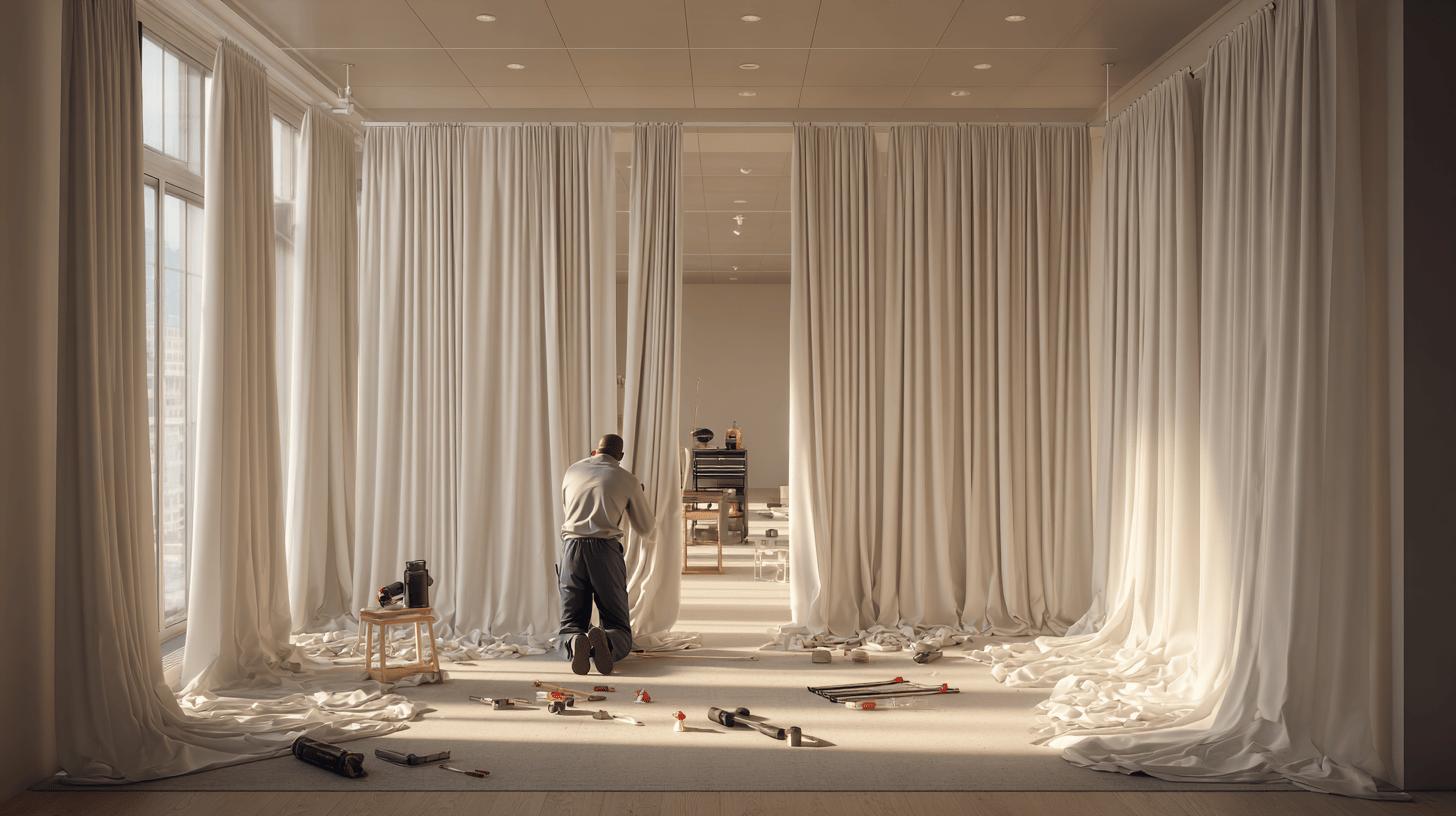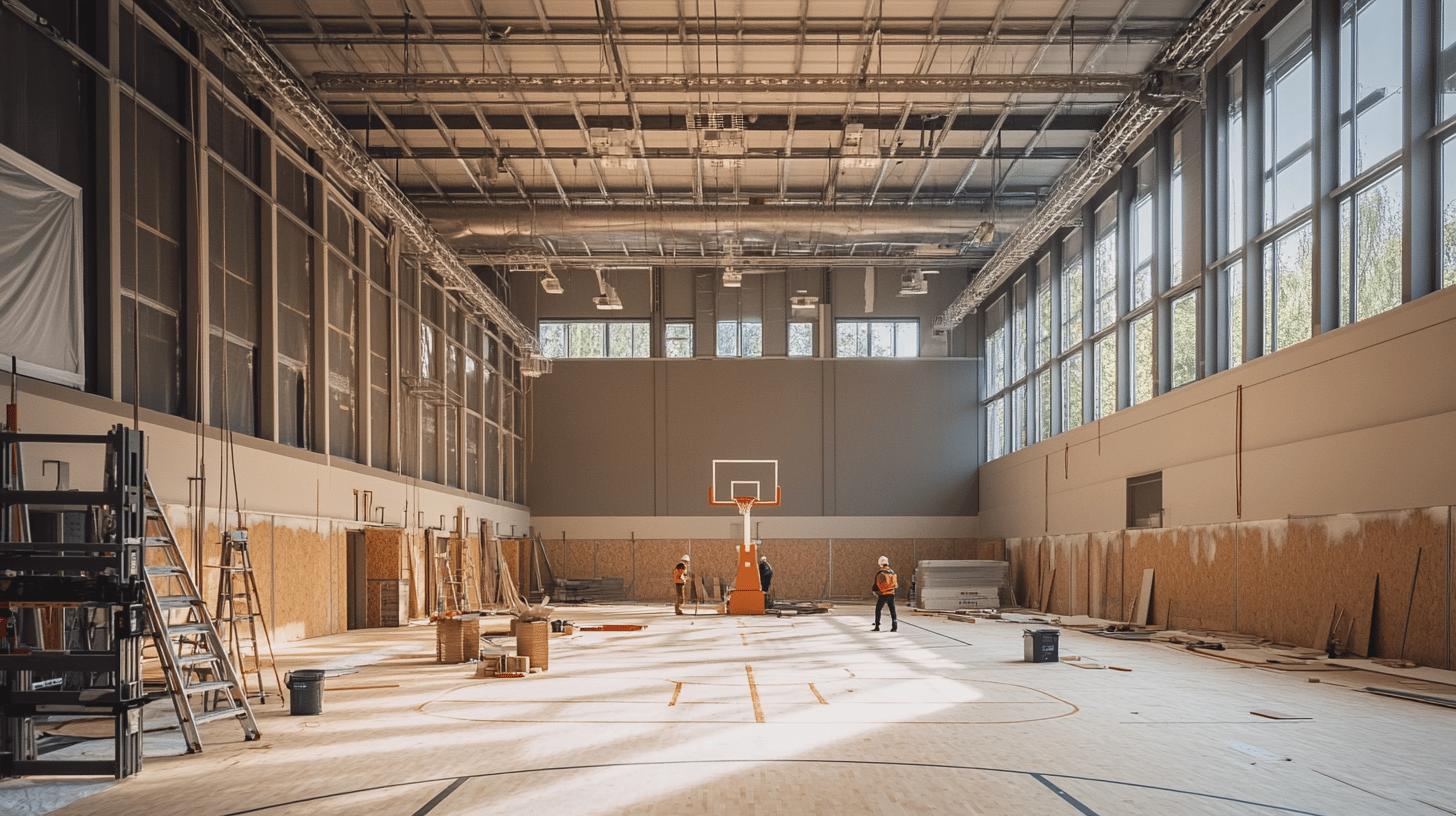Imagine transforming your chaotic open-plan office into a serene workspace or dividing your living room into intimate areas with the simple pull of a curtain. Acoustic divider curtains offer not just an aesthetic upgrade, but deliver functional soundproofing solutions that enhance both space and style. From noise reduction to energy efficiency, these versatile dividers are changing the way we experience modern environments. Discover how acoustic divider curtains can tailor your spaces, providing privacy and functionality without compromising on elegance, in our comprehensive guide to their role and benefits.
Understanding Acoustic Divider Curtains and Their Role
Acoustic divider curtains are integral to modern interior design, serving as effective soundproofing solutions. These curtains reduce ambient noise levels by absorbing and blocking sound waves, thereby enhancing acoustic comfort in various settings. By creating a barrier against sound transmission, they significantly contribute to noise reduction, making them ideal for environments where maintaining a quiet atmosphere is essential.
- Energy Efficiency: Acoustic divider curtains help retain warmth, thereby reducing heating costs during colder months.
- UV Protection: They shield interiors from harmful UV rays, preventing damage to furniture and décor.
- Temperature Regulation: These curtains contribute to maintaining cooler indoor temperatures during sunnier months, reducing reliance on air conditioning.
- Cost Savings: By improving thermal insulation, they lower energy consumption, leading to reduced utility bills.
- Environmental Impact: The use of these curtains supports sustainable living by conserving energy resources.
.
In open-plan offices and large living spaces, acoustic divider curtains offer unmatched flexibility and style. They can easily be repositioned to create private areas and enhance usability without the need for permanent structural changes. Additionally, their aesthetic versatility allows them to blend seamlessly with various interior design themes, adding an element of sophistication while serving a practical function. This adaptability makes them a preferred choice for both residential and commercial applications, where dynamic space management is required.
Material Choices for Acoustic Curtain Effectiveness
Selecting the right material for acoustic divider curtains is crucial for maximising sound absorption and enhancing room acoustics. The effectiveness of these curtains largely depends on the density and quality of the materials used. Dense, sound-absorbing fabrics significantly reduce noise levels by trapping sound waves, making them indispensable for environments requiring noise control.
- Quilted Fibreglass: Offers excellent sound absorption and is highly effective in reducing echo, making it suitable for studios and theatres.
- Mass-Loaded Vinyl: Known for its superior sound-blocking capabilities, it is ideal for areas needing maximum noise isolation.
- Patterned Fabrics: Provide both sound absorption and aesthetic appeal, allowing integration into diverse interior designs.
- Textured Materials: Enhance sound diffusion while adding a tactile element to the space, perfect for creating visually interesting partitions.
.
Acoustic divider curtains are available in various materials, each offering distinct aesthetic and functional benefits. Patterned fabrics allow for design flexibility, catering to different style preferences, while textured materials offer a unique visual and tactile experience. Double-thick options, ranging from 2.5mm to 5mm, provide superior insulation, ensuring both soundproofing and thermal regulation. This variety in material choice ensures that acoustic divider curtains can seamlessly blend into any space, balancing functionality with style.
Installation Techniques for Acoustic Divider Curtains

Proper installation of acoustic divider curtains is paramount to achieving optimal performance in soundproofing and space management. The flexibility in configuration allows these curtains to adapt to various room acoustics, enhancing their effectiveness. Utilising the correct installation techniques ensures that the curtains not only provide the necessary acoustic barriers but also maintain their aesthetic appeal and functionality.
| Installation Method | Benefits |
|---|---|
| Tracks | Allows for smooth and easy movement; ideal for flexible space configurations. |
| Hooks | Simple and cost-effective; suitable for quick and easy installation. |
| Curtain Tape | Provides a neat finish and can be adjusted for precise positioning. |
| Velcro | Offers quick attachment and removal; best for temporary installations. |
Robust hardware is essential to support the weight and functionality of acoustic divider curtains effectively. Strong curtain rails and brackets are recommended to withstand frequent use and ensure longevity. Reinforced fixtures prevent sagging and maintain the desired tension, enhancing the curtain’s soundproofing capability. By investing in high-quality hardware, users can ensure that their acoustic divider curtains continue to deliver superior performance and maintain their structural integrity over time.
Cost Considerations and Customisation Options
The cost of acoustic divider curtains is influenced by several factors, primarily the materials used and the dimensions required. High-end materials, such as mass-loaded vinyl or quilted fibreglass, offer superior soundproofing but come at a higher price point. Additionally, larger curtains designed for expansive spaces require more material, thus increasing costs. This results in price variations that can range from $100 for basic options to several thousand dollars for premium, expansive installations.
- Material Selection: Choose from a range of fabrics, each offering different levels of sound absorption and aesthetic appeal.
- Size Variability: Custom sizes ensure a perfect fit for any space, whether large conference rooms or intimate studios.
- Accessory Options: Personalise with features like fire-retardant coatings or thermal linings for enhanced functionality.
- Design Flexibility: Opt for patterns and colours that complement existing décor, adding a stylish touch to any environment.
.
Bespoke solutions provide significant advantages for spaces with unique requirements. Customisation allows for seamless integration into the existing architecture, ensuring that both aesthetic and functional needs are met. Tailored curtains can address specific acoustic challenges, such as varying frequency ranges, while maintaining visual harmony with the surrounding environment. This adaptability not only optimises space utilisation but also enhances the overall interior design, making bespoke acoustic divider curtains an invaluable asset to both residential and commercial spaces.
Real-world Applications and Benefits of Acoustic Divider Curtains
Acoustic divider curtains are highly versatile, making them an ideal solution for various settings that require both noise reduction and flexible space management. In multi-purpose spaces, these curtains facilitate the creation of temporary partitions, thus optimising the available area without the need for permanent structures. Their ability to enhance acoustic comfort is particularly beneficial in environments where sound control is paramount. Additionally, they contribute to energy savings through thermal insulation, making them both a practical and economically sound choice for a wide range of applications.
Examples of Use
1. Office Environments
In open-plan offices, acoustic divider curtains serve a dual purpose: they reduce ambient noise levels and create private areas for focused work or meetings. By acting as flexible room dividers, they can be easily reconfigured to accommodate changing office layouts or varying team sizes. This adaptability not only improves the efficiency of the workspace but also enhances employee productivity by providing a quieter, more comfortable environment.
2. Educational Institutions
Educational settings benefit significantly from the use of acoustic divider curtains, particularly in large lecture halls or multi-functional rooms. These curtains can be used to partition spaces for different activities or group sizes, allowing for concurrent sessions without acoustic interference. The sound-absorbing properties of the curtains ensure that learning environments remain conducive to concentration, thereby enhancing the overall educational experience.
3. Residential Spaces
Within residential spaces, acoustic divider curtains offer a stylish solution for creating separate zones in open-plan homes or studios. They provide privacy when needed and can be drawn back to open up the space, offering flexibility in how the area is used. Their soundproofing capability also makes them ideal for home theatres or music rooms, where they help maintain sound quality by reducing echo and external noise intrusion.
Beyond their functional benefits, acoustic divider curtains contribute significantly to interior design aesthetics. Available in a variety of materials, colours, and patterns, they can complement existing décor while adding a touch of style. By integrating seamlessly into any environment, they enhance both the visual appeal and practicality of a space. This combination of functionality and design versatility ensures that acoustic divider curtains remain a sought-after solution in both commercial and residential applications.
Final Words
Acoustic divider curtains serve a dual purpose: they reduce noise and protect interiors, whilst providing flexible design solutions. With various materials available, from quilted fibreglass to mass-loaded vinyl, these curtains offer diverse advantages in sound absorption and aesthetics. Installation methods, from tracks to hooks, offer flexibility and strong support for optimal performance. Customisation options ensure bespoke solutions for any budget, with prices reflecting materials and additional features. Acoustic divider curtains are highly effective in commercial and residential spaces. They protect floors and optimise room configurations, enhancing usability and aesthetic appeal.
Add dividers → Sports Flooring Contractors
FAQ
Do acoustic curtains actually work?
Acoustic curtains are effective for reducing noise by absorbing sound waves. Their high-density materials and multiple layers enhance their soundproofing capability, contributing to a quieter and more comfortable environment.
Do acoustic room dividers work?
Acoustic room dividers are designed to reduce sound transmission between spaces. Their construction with sound-absorbing materials makes them an efficient solution for creating quieter, more private areas.
Which curtains are best for acoustic purposes?
For acoustic purposes, curtains made from dense materials like quilted fibreglass or mass-loaded vinyl are best. These materials effectively absorb sound, improve acoustics, and enhance room privacy.
How to minimise sound between floors?
To minimise sound between floors, install acoustic underlayments, dense flooring materials, and use additional techniques such as soundproof carpets and rugs to absorb and dampen noise. Acoustic ceiling panels also help reduce sound transmission.


